This is a quick post and a follow-up from my last one: smoked salmon onigiri.
These delicious, tasty little snacks — onigiri…have you tried (making) them?
To lend the onigiri a bit more flavor, I added a dry seasoning mix, furikake, to the rice.
My version of furikake includes toasted sesame seeds (black and white), dried seaweed (nori), bonito flakes/Katsuobushi (dried, fermented, and smoked skip jack tuna), dehydrated shiso leaves, and salt.
In addition to onigiri/rice, furikake makes a great all-around seasoning for vegetables, salads, eggs, noodles, fish, and even popcorn.
Furikake is my new best friend in the spice cabinet. I like to sprinkle it on just about everything.
There are many commercial/store versions of furikake out there. Some are made with dried salmon, fish roe, shrimp, egg (tomago), wasabi, etc., and some with, perhaps, unwanted ingredients such as MSG or sugar.
The good news: Furikake is easy to make. In doing so, you decide what ingredients to add. You’re in control. You can make it vegetarian by omitting the bonito.
I happen to really like the addition of shiso leaves, which I dehydrated and then crumbled into little pieces.
Shiso is the Japanese name for an annual herb called Perilla, which is a member of the mint family.
Shiso leaves have a unique herbaceous quality to them. Sometimes described as citrusy, minty, or having notes of basil, anise, or cinnamon, shisho is difficult to pin down as far as a flavor profile is concerned.
Shisho leaves can be reddish-purple or green. The reddish variety is typically used to color umemboshi (Japanese pickled plums), a common onigiri filling.
Here’s a nice link to other ideas (43 of them) regarding how to use shiso.
I found the shiso leaves at the Union Square Green City Market [Lani’s Farm, Burlington County, New Jersey]. They have a superb selection of mainstream and hard-to-find greens; I always walk away with something new to experiment with in the kitchen.
Shiso Fuirkake
1/4 cup dried shiso
1/3 cup dried nori
1/3 cup toasted white sesame seeds, divided
1/3 cup toasted black sesame seeds, divided
1/3 cup bonito flakes, lightly packed
sea salt to taste
To dehydrate the shiso leaves: Dehydrate at 125-130F (in a dehydrator) until completely dried and brittle, about 45 minutes. Crumble into little pieces.
Mix the dehydrated shiso, *nori, half of the white and black sesame seeds, bonito flakes, and salt in a spice grinder. Pulse a few times until the consistency of small flakes. Transfer to a small bowl and add in the rest of the sesame seeds.
*I cut the nori by hand into little pieces, but you could also pulse in the spice grinder, just make sure not to pulse too fine.
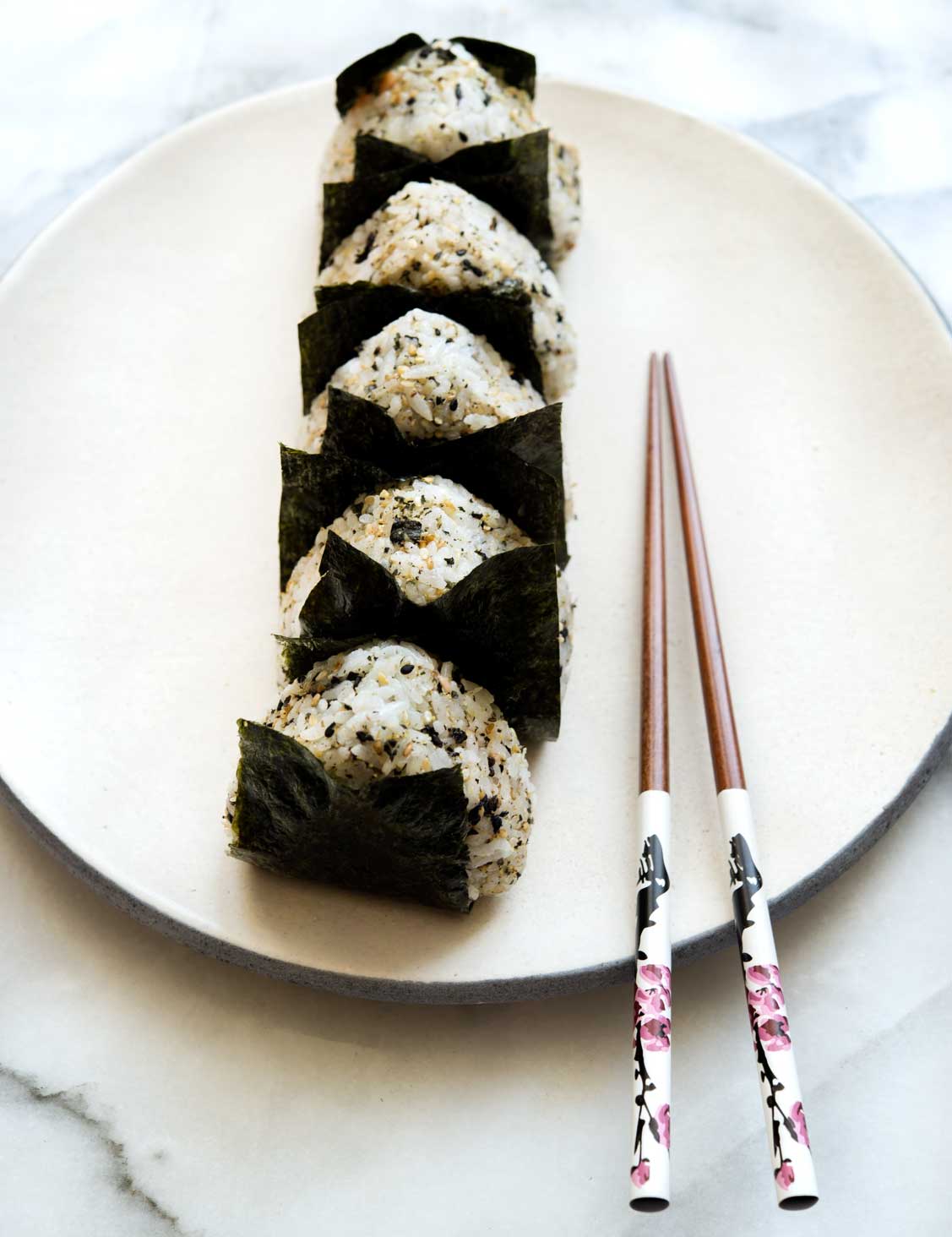







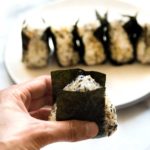

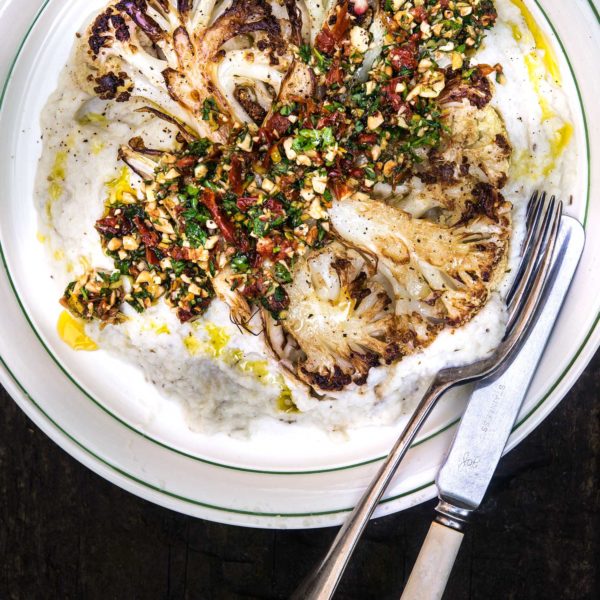
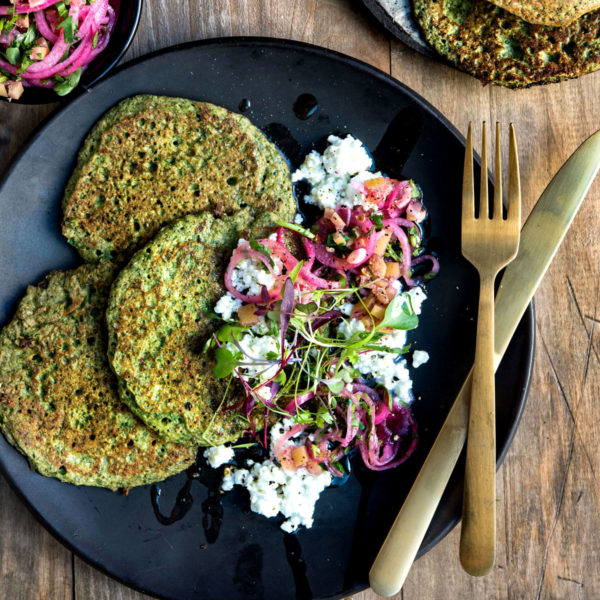
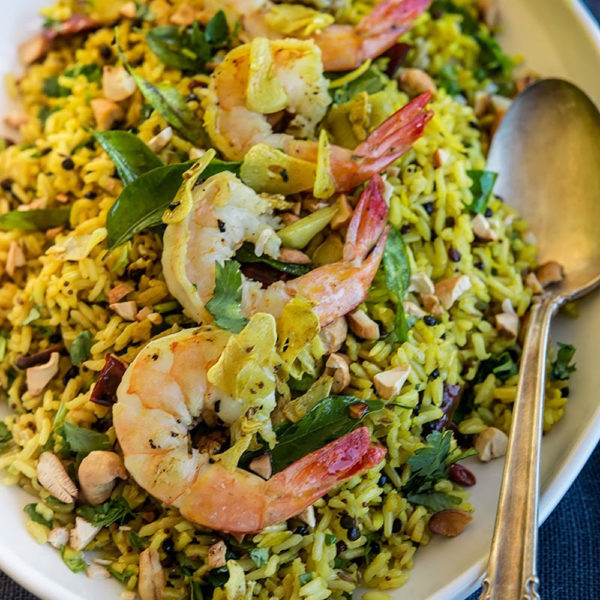


12 comments
speakfreely
Did you just dry the shiso leaves plain? I ask because I'm growing shiso right now (red and green), and wanted to do something to preserve most of it at its peak. I have a jar of store bought "yukari furikake" which is dried red shiso that was previously used to make umeboshi. So I launched in that direction by putting my fresh shiso in the bottom of a glass container, and some umeboshi that I made last Summer on top of it with some ume "vinegar" (purchased) to pickle the leaves first. After about a week, I'll remove the pickled leaves and dry them, and see how they compare to the purchased yukari furikake. I thought of drying the leaves as-is and saving myself the trouble, but I wanted the saltiness too. Any thoughts?
speakfreely
Did you just dry the shiso leaves plain? I ask because I'm growing shiso right now (red and green), and wanted to do something to preserve most of it at its peak. I have a jar of store bought "yukari furikake" which is dried red shiso that was previously used to make umeboshi. So I launched in that direction by putting my fresh shiso in the bottom of a glass container, and some umeboshi that I made last Summer on top of it with some ume "vinegar" (purchased) to pickle the leaves first. After about a week, I'll remove the pickled leaves and dry them, and see how they compare to the purchased yukari furikake. I thought of drying the leaves as-is and saving myself the trouble, but I wanted the saltiness too. Any thoughts?
Wild Greens and Sardines
Speak Freely, that all sounds fantastic. I would love to know how you made the unemboshi. Please let me know how your shiso experiment turns out. I just straight up dried the shiso leaves in a dehydrator, crumbled, and added to the furikake, but your version sounds really intriguing.
Wild Greens and Sardines
Speak Freely, that all sounds fantastic. I would love to know how you made the unemboshi. Please let me know how your shiso experiment turns out. I just straight up dried the shiso leaves in a dehydrator, crumbled, and added to the furikake, but your version sounds really intriguing.
speakfreely
Hi, I pretty much followed Maki's methods outlined here. It wasn't difficult; the main issue was finding ume plums to pickle. I had resigned myself to trying the method on under-ripe apricots (which are a closer relative to ume plums than plums) when I stumbled upon some umes at a Super H Mart in Fairfax, VA. (I live miles from anywhere, and so take advantage of my trips to civilization.) I will report back here when I dry the pickled shiso, and let you know how it compares with the commercial product. Your photography is gorgeous, BTW, but you must hear that all the time.
speakfreely
Hi, I pretty much followed Maki's methods outlined here. It wasn't difficult; the main issue was finding ume plums to pickle. I had resigned myself to trying the method on under-ripe apricots (which are a closer relative to ume plums than plums) when I stumbled upon some umes at a Super H Mart in Fairfax, VA. (I live miles from anywhere, and so take advantage of my trips to civilization.) I will report back here when I dry the pickled shiso, and let you know how it compares with the commercial product. Your photography is gorgeous, BTW, but you must hear that all the time.
Wild Greens and Sardines
I love H-Mart, especially the one in Fairfax, VA (used to live in DC). Hope your shiso turns out well. Thanks for the kind words. I'm continually working on the photography. Slowly learning.
Wild Greens and Sardines
I love H-Mart, especially the one in Fairfax, VA (used to live in DC). Hope your shiso turns out well. Thanks for the kind words. I'm continually working on the photography. Slowly learning.
speakfreely
Ok…after a week in with the ume, I removed the shiso, squeezed it dry, and let the dehydrator finish dessicating the leaves. Then I crumbled up the crispy leaves over a strainer until everything was small enough to go through. Had to use the suribachi on some of thicker chunks that I hadn't separated before drying, and in the end, some of it was quite fine and powdery. Compared to the commercial "yukari furikake" mine rocks! It is both more tangy and more shiso-y, and has just the right briny saltiness. Of course I've got the freshness factor on my side, at least for now…This experiment was a definite success, and I would recommend it.
Wild Greens and Sardines
Thank you so much for sharing your results. Glad it was a success! I'm quite curious now to give it a try. Will have to make a trip to H-Mart soon.
lizzy w
I am doing this tonight!! What temperature do I dehydrate the shiso leaves on? Thank you!! Great post / pictures!
wildgreensandsardines@gmail.com
Hi Lizzy, I dehydrated the shiso leaves at 125-130F. Hope you enjoy! Linda